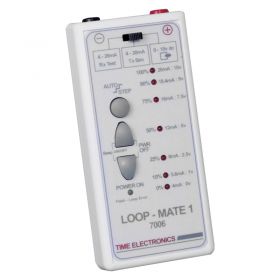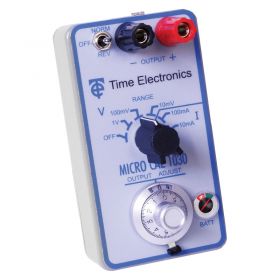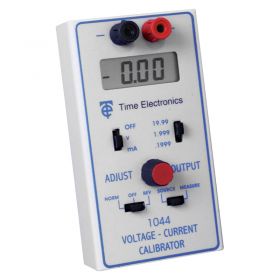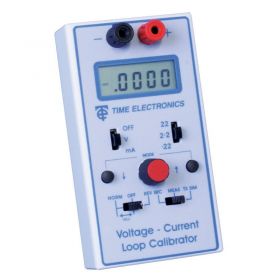Voltage, Current & Loop Calibrators
-

 Time Electronics 7006 Loop Simulator and Source£298.80 £249.00
Time Electronics 7006 Loop Simulator and Source£298.80 £249.00- 7 set calibration points
- 0.1% accuracy
- 0 to 10 V or 4 to 20mA loop
249 Reward PointsPrice Match Guarantee7006 -

 Free UK DeliveryTime Electronics 1030 MicroCal Voltage & Current Source£414.00 £345.00
Free UK DeliveryTime Electronics 1030 MicroCal Voltage & Current Source£414.00 £345.00- Simulate various signal types
- Multiple outputs
- High accuracy
345 Reward PointsPrice Match Guarantee1030 -

 Free UK DeliveryTime Electronics DC Voltage and Current Calibrator£678.00 £565.00
Free UK DeliveryTime Electronics DC Voltage and Current Calibrator£678.00 £565.00- High accuracy of 0.05%
- Can measure and source current and voltage
- Portable with its own carrying case
565 Reward PointsPrice Match Guarantee1044 -

 Free UK DeliveryTime Electronics Voltage / Current / Loop Calibrator£696.00 £580.00
Free UK DeliveryTime Electronics Voltage / Current / Loop Calibrator£696.00 £580.00- Works with current and voltage levels
- Accuracy of 0.02%
- Suitable for being used by a number of professions
580 Reward PointsPrice Match Guarantee1048
About Voltage, Current & Loop Calibrators
Also known as current loops, 4-20mA sources are one of the most common methods used in the process industry for transmitting data between sensors and the applications that control and monitor them. The main advantage of a current loop is it can be combined with a huge variety of different sensors to measure temperature, pressure, liquid flow, or light. This data is then compatible with a wide range of different management applications that interoperate with the data and react accordingly.
4-20mA current loops work by taking the results from the sensor and converting it to a proportional current. This means that a zero result causes a 4mA to be transmitted and a 20mA current is sent when the sensor is at full capacity. This information is then sent through copper cables to a receiver at the controller. The controller then decodes the sent signal into the format that is required by the process monitoring application.
The drawback with this method is that over long distances the signal can eventually erode as the voltage begins to wane. An engineer must also be careful when laying these cables to ensure that no electrically noisy systems are located close by, otherwise, they can affect the signal. The main precaution that can be taken is to ensure the use of shielded cabling but this can become too expensive if used over long distances.
To ensure that a current loop is operating effectively engineers often use current calibrators to test the cables and ensure that there are no issues that need resolving no matter what their source.


